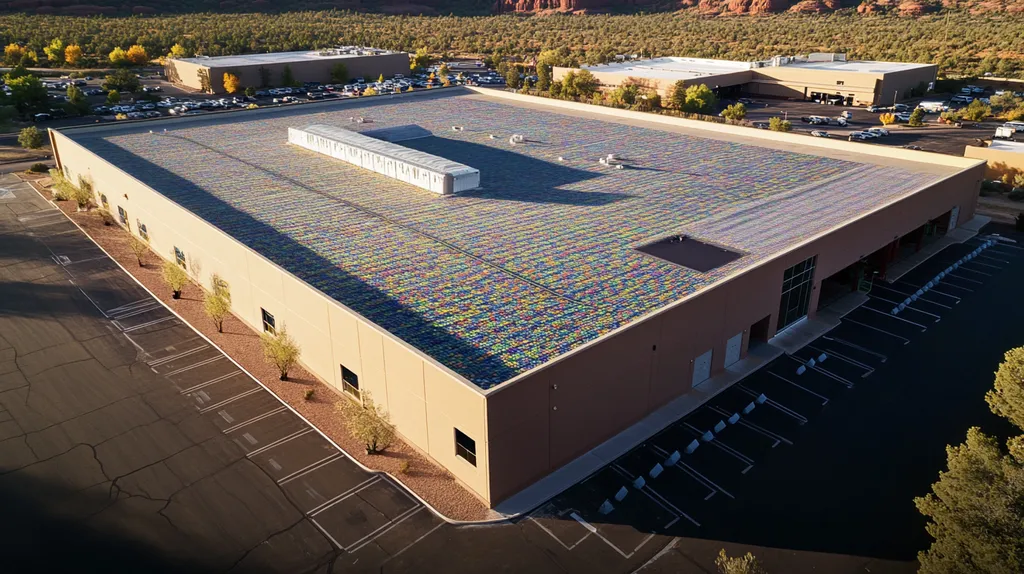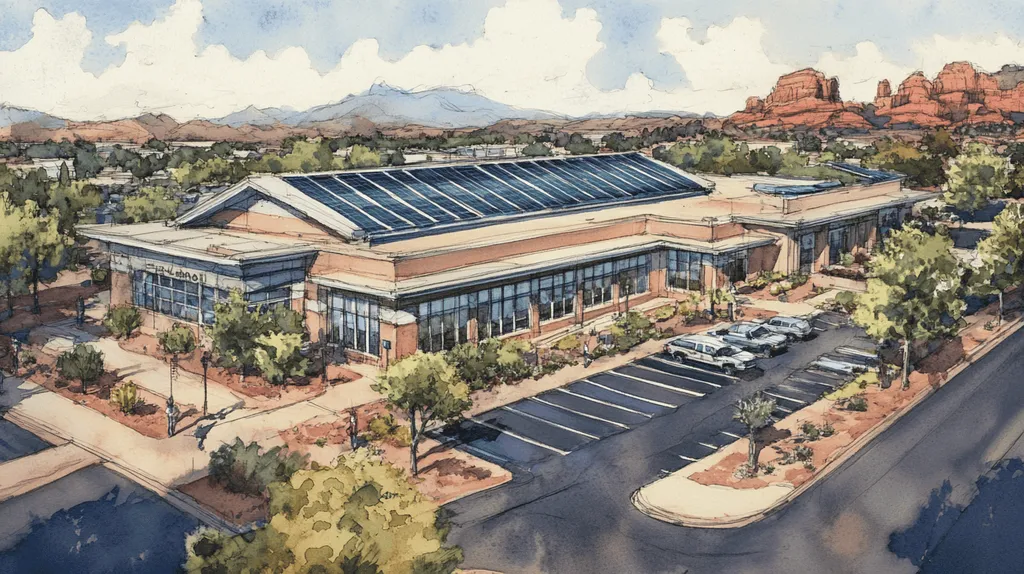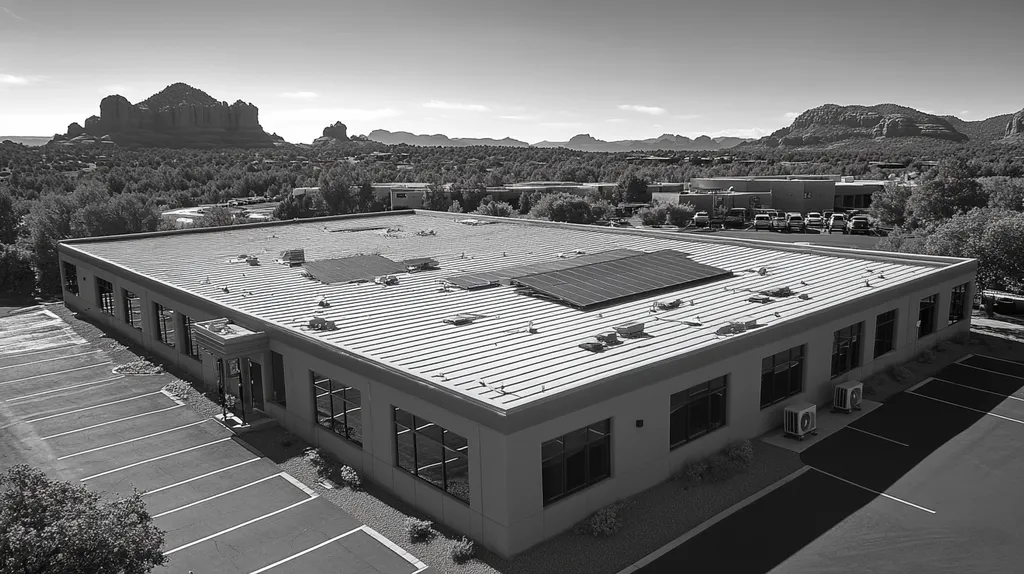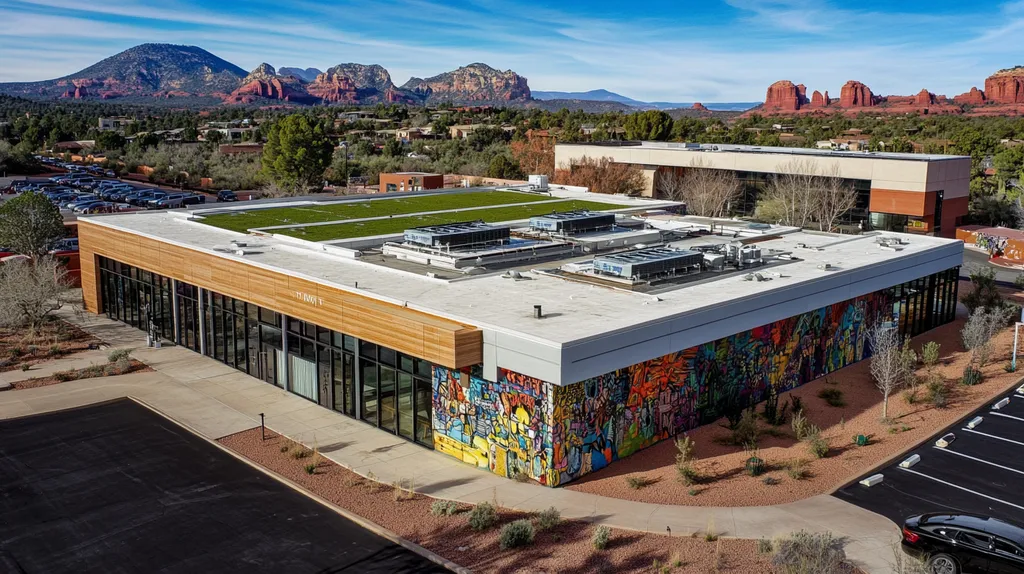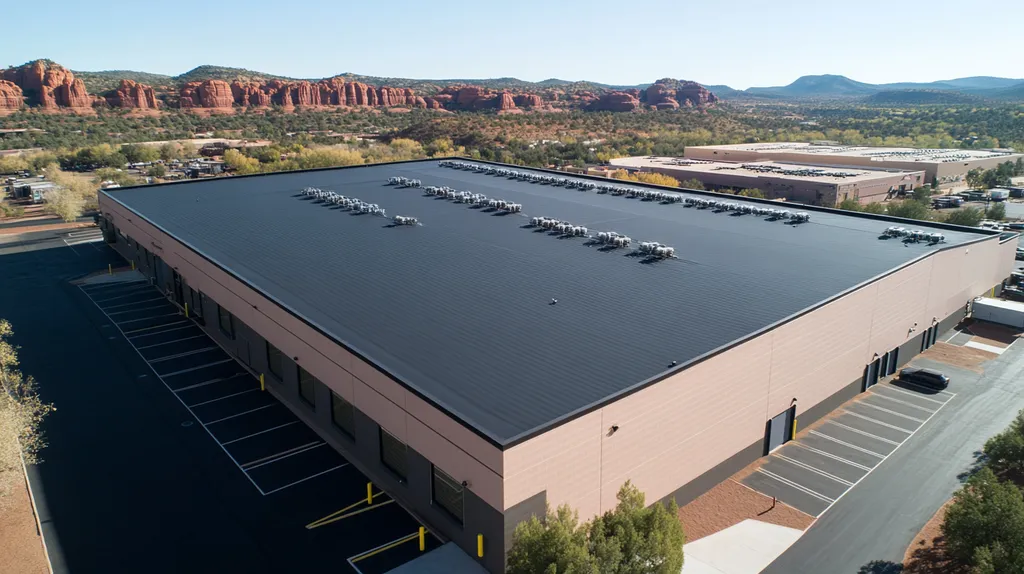Welcome to today’s Battle Royale featuring two roofing heavyweights: “Polyurethane Coatings” in the east corner versus “Polyurea Coatings” in the west!
Tonight’s showdown pits these contenders against each other across six punishing rounds designed to test every aspect of their performance for Industrial Roof Coating Safety.
At stake? Millions in potential costs, decades of building protection, and the critical performance demands of modern commercial and industrial facilities.
Our professional judging panel will evaluate each round on technical merit, real-world performance, and value delivery. After all six rounds, we’ll declare our ultimate champion.
Ladies and gentlemen, facility managers and building owners… it’s time to rumble!
ROUND 1: INITIAL COSTS & INSTALLATION
In today’s industrial roofing landscape, safety certification requirements drive crucial decisions about protective coatings. With facility managers facing increased scrutiny over roofing material choices, understanding the full scope of initial investments becomes paramount. The selection between polyurethane and polyurea coatings impacts not just immediate costs, but also installation requirements and project completion timelines.
Material Expenses
Both polyurethane and polyurea coatings must undergo rigorous testing for fire resistance, wind resistance, and impact resistance to meet UL and ASTM standards before being approved for industrial applications. These certifications significantly influence material costs and availability. (source: UL Solutions)
Polyurethane coatings typically present lower upfront material costs, making them an attractive option for budget-conscious projects. Their widespread availability and established market presence contribute to competitive pricing structures.
Polyurea materials command premium prices due to their advanced chemical properties and enhanced performance characteristics. While the initial investment is higher, the material’s superior durability and resistance properties often justify the increased expense.
ADVANTAGE: Polyurethane Coatings
Installation Complexity
Installation procedures for both coating types must adhere to strict safety protocols and application standards. The complexity of these requirements directly affects labor costs and contractor selection.
Polyurethane coatings offer relatively straightforward application processes that most qualified roofing contractors can execute. Their longer cure times allow for adjustments during application, reducing the risk of installation errors.
Polyurea installations demand specialized equipment and highly trained technicians due to rapid cure times and precise mixing requirements. This specialized expertise typically increases labor costs but ensures proper application and performance.
ADVANTAGE: Polyurethane Coatings
Project Timeline
Project duration significantly impacts facility operations and overall costs. Shorter timelines minimize disruption but may require more intensive preparation and coordination.
Polyurethane applications typically extend over several days due to slower cure times between coats. This extended timeline can increase labor costs and prolong facility disruption.
Polyurea’s rapid cure time allows for same-day project completion in many cases. This acceleration can substantially reduce facility downtime and allow for quicker return to normal operations.
ADVANTAGE: Polyurea Coatings
ROUND 1 RESULTS: TIE
ROUND 2: DURABILITY & LIFESPAN
When industrial roofs fail prematurely due to coating breakdown, facilities face severe consequences: water damage, equipment losses, and operational shutdowns. The stakes are particularly high in manufacturing environments where even minor leaks can compromise production quality and worker safety. Understanding how different coatings perform over time is crucial for protecting both assets and operations.
Chemical Resistance
Industrial environments expose roof coatings to harsh chemicals, acids, and solvents that can rapidly degrade protective barriers. The coating’s ability to resist these aggressive compounds directly impacts its functional lifespan and protective capabilities.
Polyurethane coatings offer moderate chemical resistance but can break down when exposed to concentrated acids or persistent chemical exposure. Their performance varies significantly based on specific formulation and environmental conditions.
Polyurea demonstrates superior chemical resistance across a broader spectrum of industrial compounds. Its dense molecular structure creates an exceptionally tough barrier against chemical attack, maintaining integrity even under sustained exposure.
ADVANTAGE: Polyurea Coatings
Weather Resistance
Roof coatings must withstand extreme temperature cycles, UV radiation, and moisture while maintaining their protective properties. Long-term exposure to these elements tests the fundamental durability of coating systems.
Polyurethane coatings generally perform well in moderate climates but may show accelerated aging in extreme conditions. UV exposure can cause chalking and gradual deterioration of their protective properties.
Polyurea exhibits exceptional resistance to weathering factors, maintaining its physical properties even after years of exposure. Its rapid cure time creates a more stable molecular structure that resists degradation from UV radiation and thermal stress.
ADVANTAGE: Polyurea Coatings
Physical Impact Resistance
Industrial roofs regularly face mechanical stress from maintenance traffic, equipment installation, and debris impact. The coating’s ability to absorb and dissipate these forces without compromising its protective barrier is essential for long-term performance.
Polyurethane provides good impact resistance and flexibility, effectively absorbing normal roof traffic and minor impacts. However, its softer nature can make it more susceptible to punctures and tears.
Polyurea delivers superior impact resistance while maintaining essential flexibility. Its unique chemistry creates an exceptionally tough yet elastic membrane that better resists punctures and mechanical damage.
ADVANTAGE: Polyurea Coatings
ROUND 2 WINNER: Polyurea Coatings
ROUND 3: PERFORMANCE FACTORS
Industrial roof coating failures can lead to catastrophic consequences, with the average repair cost exceeding $250,000 for major manufacturing facilities. Performance characteristics directly impact workplace safety, operational continuity, and facility protection. Understanding how polyurethane and polyurea coatings perform under real-world conditions is essential for making informed decisions that protect both assets and personnel.
Sun-Reflective Properties
ASTM D6083 establishes critical performance metrics for roof coatings, including essential requirements for solar reflectance and thermal resistance. These standards help determine how effectively coatings protect against UV degradation and heat buildup. (source: CoatingsTech Magazine)
Polyurethane coatings provide moderate solar reflectance but can experience accelerated degradation under intense UV exposure. Their reflective properties typically decline over time, leading to increased heat absorption and potential thermal stress on the roof structure.
Polyurea coatings maintain superior reflective properties even after years of sun exposure. Their advanced chemical structure resists UV degradation while providing consistent temperature control benefits throughout their service life.
ADVANTAGE: Polyurea Coatings
Impact Resistance
Industrial roofs regularly face impacts from maintenance activities, falling objects, and severe weather events. The coating’s ability to maintain integrity under these conditions directly affects its protective capabilities.
Polyurethane coatings offer adequate impact resistance for normal wear but can become brittle over time. This degradation increases vulnerability to punctures and tears, particularly in high-traffic areas or regions prone to hail.
Polyurea coatings deliver exceptional impact resistance while maintaining crucial flexibility. Their molecular structure creates a more resilient barrier that better absorbs and distributes impact forces without compromising the protective seal.
ADVANTAGE: Polyurea Coatings
Overall Durability
Long-term durability determines both maintenance requirements and total lifecycle costs. Coating performance must remain consistent across varying environmental conditions and exposure types.
Polyurethane coatings demonstrate good initial durability but may require more frequent maintenance or reapplication. Their performance can decline more rapidly when exposed to harsh industrial environments or extreme weather conditions.
Polyurea coatings maintain their protective properties longer under demanding conditions. Their superior chemical resistance and physical durability translate to extended service life and reduced maintenance requirements.
ADVANTAGE: Polyurea Coatings
ROUND 3 WINNER: Polyurea Coatings
ROUND 4: MAINTENANCE REQUIREMENTS
Industrial roof coating maintenance directly impacts facility safety and operational continuity. With coating failures causing an average of $3.50 per square foot in emergency repairs, proper maintenance planning becomes crucial for protecting both assets and operations. Understanding the specific upkeep requirements of polyurethane and polyurea coatings helps facility managers develop effective maintenance strategies that prevent costly failures.
Inspection Requirements
Regular inspections play a vital role in preventing coating deterioration and maintaining roof system integrity. The frequency and complexity of these inspections directly impact maintenance budgets and staff resources. (source: UL Solutions)
Polyurethane coatings require quarterly visual inspections to identify early signs of weathering or physical damage. These examinations must carefully evaluate surface conditions, seam integrity, and potential areas of moisture infiltration.
Polyurea coatings typically need only semi-annual inspections due to their superior chemical stability and physical durability. Their resistance to environmental degradation reduces the frequency of required assessment while maintaining protection levels.
ADVANTAGE: Polyurea Coatings
Cleaning Protocols
Maintaining coating cleanliness prevents chemical damage and preserves reflective properties. Proper cleaning procedures protect both the coating system and the underlying structure from premature degradation.
Polyurethane coatings demand monthly cleaning to remove industrial contaminants and debris. Their surface chemistry makes them more susceptible to chemical absorption, requiring careful selection of cleaning agents.
Polyurea coatings resist contamination adhesion, requiring only quarterly cleaning in most environments. Their dense molecular structure creates a natural barrier against chemical absorption and simplifies the cleaning process.
ADVANTAGE: Polyurea Coatings
Repair Procedures
The complexity and frequency of repairs significantly impact long-term maintenance costs. Understanding repair requirements helps facilities allocate resources effectively and minimize downtime.
Polyurethane coating repairs often require extensive surface preparation and careful environmental control. Their chemistry demands specific temperature and humidity ranges for successful patch integration.
Polyurea coatings facilitate simpler repair procedures with better patch adhesion and faster cure times. Their enhanced durability reduces repair frequency while their chemistry allows for more flexible application conditions.
ADVANTAGE: Polyurea Coatings
ROUND 4 WINNER: Polyurea Coatings
ROUND 5: SUSTAINABILITY CREDENTIALS
Environmental responsibility has become a critical factor in industrial roofing decisions, with coating choices directly impacting both sustainability metrics and operational costs. As facilities face increasing pressure to reduce their carbon footprint, understanding the environmental credentials of roofing materials becomes essential. With industrial buildings accounting for nearly 30% of urban energy consumption, selecting the right coating can dramatically influence a facility’s environmental impact.
Solar Reflectance Standards
Solar reflectance capabilities directly impact building energy efficiency and urban heat island effects. These properties must meet increasingly stringent environmental regulations while maintaining long-term performance.
Polyurethane coatings typically achieve moderate initial solar reflectance values but often show significant degradation over time. Their performance in this area requires more frequent recoating to maintain energy efficiency standards.
Polyurea coatings demonstrate superior long-term solar reflectance properties and thermal emittance values. Their molecular structure maintains these properties more effectively over time, contributing to sustained energy efficiency. (source: Coating Technology Magazine)
ADVANTAGE: Polyurea Coatings
Environmental Impact
The manufacturing and application processes of roof coatings significantly influence their overall environmental footprint. Modern facilities increasingly prioritize materials with minimal environmental impact throughout their lifecycle.
Polyurethane coatings often contain higher levels of volatile organic compounds (VOCs) and require more frequent replacement. Their production process typically involves more environmentally impactful chemicals and manufacturing methods.
Polyurea coatings generally offer lower VOC emissions and longer service lives, reducing their environmental impact. Their advanced chemistry also allows for more environmentally conscious manufacturing processes.
ADVANTAGE: Polyurea Coatings
Resource Efficiency
The efficient use of materials during installation and maintenance directly affects a coating’s sustainability profile. Reducing waste and maximizing material utilization has become crucial for meeting environmental goals.
Polyurethane coatings often require multiple layers and generate more waste during application. Their longer cure times can also increase energy consumption during installation.
Polyurea coatings typically achieve required protection levels with fewer layers and faster curing, reducing material waste and energy consumption. Their superior durability also means less frequent replacement and reduced resource consumption over time.
ADVANTAGE: Polyurea Coatings
ROUND 5 WINNER: Polyurea Coatings
ROUND 6: SPECIALIZED APPLICATIONS
In specialized industrial environments, coating selection can mean the difference between continuous operations and catastrophic failures. With industrial facilities facing increasing regulatory scrutiny over safety measures, the stakes for proper coating selection have never been higher. Understanding how different coatings perform under extreme conditions becomes crucial for protecting both assets and personnel.
Extreme Temperature Resistance
Roofing products and systems must withstand extreme temperature variations while maintaining their protective properties. The ability to perform consistently across wide temperature ranges directly impacts facility safety and operational reliability. (source: UL Solutions)
Polyurethane coatings offer moderate temperature resistance but can become brittle in extreme cold or soften excessively in high heat. Their performance limitations often require additional protective measures in facilities with extreme temperature exposure.
Polyurea coatings maintain their physical properties across a broader temperature range, from -40°F to 350°F. Their molecular structure provides superior stability in both extreme heat and cold, ensuring consistent protection.
ADVANTAGE: Polyurea Coatings
Chemical Resistance
Industrial environments frequently expose roofing systems to aggressive chemicals, acids, and solvents. The coating’s ability to maintain its protective barrier against these substances directly affects facility safety and equipment protection.
Polyurethane coatings provide adequate resistance to mild chemical exposure but can degrade when confronted with concentrated industrial chemicals. Their vulnerability to certain solvents limits their application in chemically aggressive environments.
Polyurea coatings excel in chemical resistance, maintaining their integrity even under prolonged exposure to harsh industrial compounds. Their dense molecular structure creates an exceptional barrier against chemical penetration and degradation.
ADVANTAGE: Polyurea Coatings
Impact and Traffic Resistance
Industrial roofs must withstand regular maintenance traffic, equipment installation, and potential impacts. The coating’s ability to resist physical damage while maintaining safety properties is crucial for long-term performance.
Polyurethane coatings show acceptable resistance to light traffic but can wear prematurely under heavy use. Their softer nature makes them more susceptible to gouging and tearing from equipment or tools.
Polyurea coatings demonstrate superior resistance to impacts and abrasion while maintaining essential flexibility. Their enhanced physical properties provide better protection against mechanical damage and high traffic wear.
ADVANTAGE: Polyurea Coatings
ROUND 6 WINNER: Polyurea Coatings
AND THE WINNER IS…
After six grueling rounds of technical combat, we have our undisputed Industrial Roof Coating Safety Champion – POLYUREA COATINGS with a dominant 5-0-1 victory!
This powerhouse contender showcased superior performance across durability, maintenance, sustainability, and specialized applications. Its exceptional chemical resistance, impact protection, and temperature range flexibility proved devastating against the competition.
But don’t count polyurethane coatings out completely! In budget-conscious applications with moderate environmental demands, this veteran performer still delivers reliable protection at a lower initial cost.
Of course, every facility faces unique challenges. Local climate conditions, specific industrial exposures, and individual building characteristics all influence coating performance. While this analysis provides general guidance, it cannot account for all variables. Property owners and managers should always consult qualified roofing professionals who can evaluate their specific situation.
Ladies and gentlemen, the final bell has rung! Whether you choose the reigning champion or its worthy challenger, remember – in the high-stakes arena of industrial roofing, victory comes to those who align their facility’s specific requirements with the right contender’s strengths. Now get out there and protect those buildings!
FREQUENTLY ASKED QUESTIONS
Q. What are the initial costs for a commercial roof coating?
A. The initial costs for commercial roofing can vary widely based on the material chosen. Polyurethane coatings often have lower upfront costs, making them appealing to budget-conscious projects. However, polyurea coatings, while more expensive to install, offer superior durability that may lead to cost savings in the long run.
Q. How do polyurethane and polyurea coatings differ in durability for industrial roofs?
A. In terms of durability, polyurea coatings significantly outperform polyurethane options. While both can provide protection, polyurea has higher resistance to chemicals, weather, and physical impacts. Choosing polyurea can lead to a longer lifespan for your industrial roof, reducing the risk of costly repairs.
Q. What performance factors should I consider for my industrial roof?
A. Key performance factors include sun-reflective properties, impact resistance, and overall durability. Polyurea coatings generally excel in these areas, offering prolonged protection and efficiency under challenging environments, making them a better choice for industrial settings.
Q. How do maintenance requirements vary for industrial roof coatings?
A. Maintenance requirements differ significantly, as polyurethane requires more frequent inspections and cleaning. In contrast, polyurea coatings demand less oversight due to their inherent durability and UV stability, translating into lower overall maintenance costs for facility managers.
Q. Which coating is more sustainable for a commercial roof?
A. Polyurea coatings are generally more sustainable compared to polyurethane. They have lower VOC emissions and longer service lives, reducing their environmental footprint. Choosing polyurea can help facilities improve their sustainability credentials and meet regulatory demands more effectively.
Q. What specialized applications can polyurea coatings handle for industrial roofs?
A. Polyurea coatings can effectively meet the demands of extreme temperature environments, harsh chemicals, and heavy traffic areas. Their superior flexibility and impact resistance make them an ideal choice for specialized industrial applications requiring exceptional protection and resilience.
Q. What should I consider for long-term costs of my industrial roof?
A. Long-term costs involve more than just the initial investment. Consider maintenance, durability, and potential repair needs when selecting coatings. Opting for higher-quality polyurea might raise upfront costs but often results in fewer repairs, less downtime, and overall savings.

